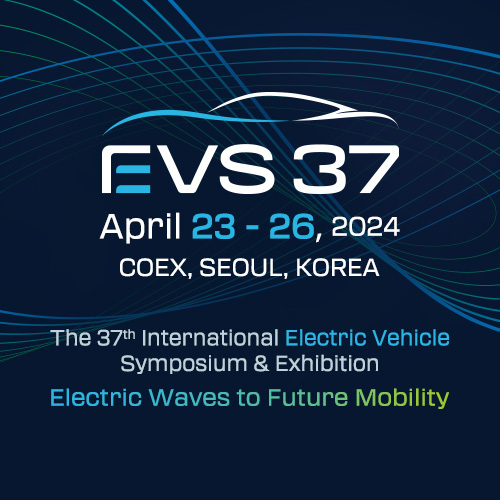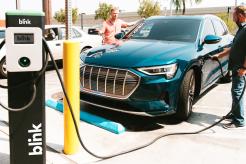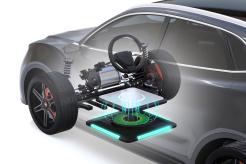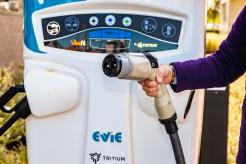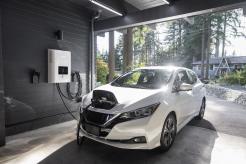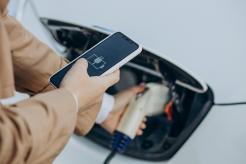Transportation can play a significant role in a person’s day-to-day life, and it’s human nature to feel comfortable making a big change only when the behavior becomes a social norm. Although awareness of EVs is high, nearly two-thirds (65 percent) of Americans have never driven an EV or known anyone who owns one.
Despite that, EV adoption is accelerating rapidly, driven by the rising cost of gasoline, longer ranges due to improved battery performance, reduced battery cost, and federal and state incentives. Younger Americans are particularly aware of related environmental issues, with 42% of Gen Z saying they are at least somewhat likely to consider an EV purchase, compared to 32% of Baby Boomers.
These are positive trends, but the EV industry faces many pressing challenges. Here are ten issues we must address as the industry progresses.
1. Purchase Cost
The EV industry’s biggest challenge is vehicle purchase cost. Electric vehicles are more expensive to build than gasoline-powered ones, primarily because of battery technology. EV batteries must hold a massive charge to provide the minimum range for most owners, requiring expensive raw materials to manufacture.
Even when discounting battery costs, there is such a massive supply of gas-powered vehicles in the U.S. that they are comparatively cheap. Although EVs may be less expensive to operate than their gasoline counterparts, first, they have to be bought – and currently, there are few models on the market with a sticker price of less than $30,000 (not including government tax credits). Used models that go for half or less of the new-car MSRP tend to be older models with much less battery range.
This situation will improve as EV sales climb overall and EV owners reach the trade-in stage.
A note about operating cost: According to the U.S. Department of Energy’s National Renewable Energy Laboratory (NREL) and the Idaho National Laboratory, EVs save their owners between $4,500 and $12,000 on operating costs. The amount depends on where the driver lives, with Hawaii providing the lowest savings and California the highest.
2. Range Anxiety
Range anxiety is real. Americans are used to jumping in their cars and going wherever they want (and however far) without worrying about finding a gas station for a quick fill-up when needed.
But people are worried about how far they can travel in an EV before finding a charging station and then having to wait through a long charging session. This challenge is particularly a concern during the winter when there can be a significant reduction in an EV’s regular battery range due to below-freezing temperatures.
Most EVs sold can go between 200-300 miles on a single charge in temperate weather conditions. That is plenty when you consider that Americans drive an average of 36 miles per day (about 13,500 miles per year). But for those long days on the road, weekend getaways, driving vacations, or just freezing weather, an EV owner may need a charge every 3-4 hours.
And with just under 80% of public charging stations being Level 2, the amount of time to charge up their EV for the next 3-4 hours of driving can take 4-6 hours or longer.
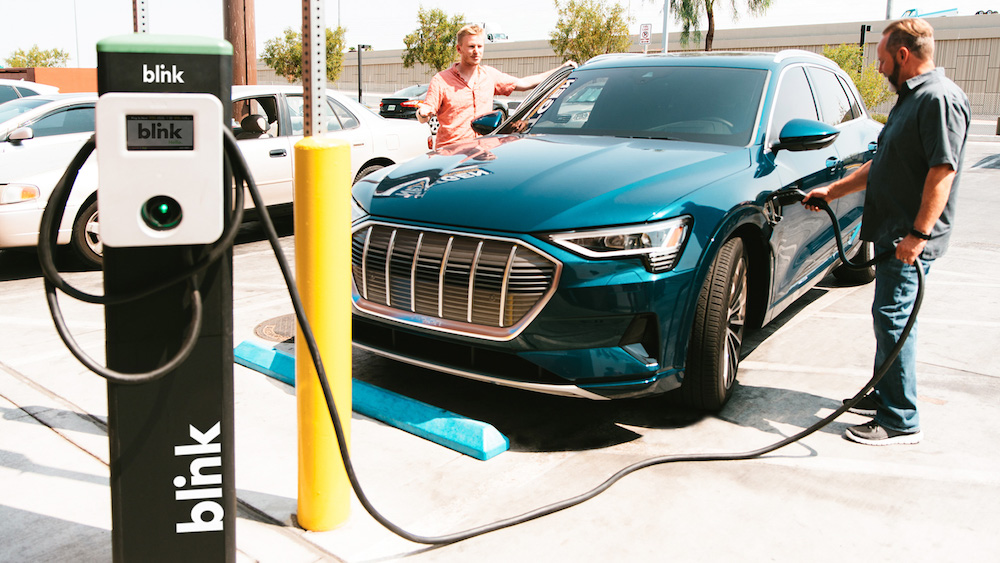
(Image Source: BlinkCharging.com)
3. Limited Selection
Ten years ago, EV models in the U.S. were limited to the Nissan Leaf 24kWh, Tesla Roadster 1.0, and the Mitsubishi iMIEV. Selection is rapidly increasing now as manufacturers ramp up. As of 2022, there were 28 EV models available in America from 18 manufacturers.
There is still a limited selection of EVs compared to gasoline-powered cars, and most auto manufacturers offer only a few models. Sedans, hatchbacks, and SUVs are becoming more available. However, people looking for a truck or minivan still need more choices.
Ford introduced the F-150 Lightning in 2022, their EV version of America’s best-selling passenger truck. It has proven so popular that scheduled production is already pre-sold for an entire year in advance.
4. Difficulty Finding a Technician
Most car owners find that having their vehicle serviced by a dealer can be significantly more expensive than using a qualified independent maintenance and repair shop.
With the EV industry still comparatively small, there are relatively few trained EV repair technicians and even fewer qualified independent shops. Working on an EV beyond tires, brakes, light bulbs, and audio components can be dangerous for an untrained technician, which means most EV owners rely on their EV dealer for service.
Fortunately, EVs need less maintenance than gasoline-powered cars. But if an expensive component needs replacing (such as the battery pack, which typically runs $5,000 and up depending on the EV model), there is currently little competition to help keep costs down.
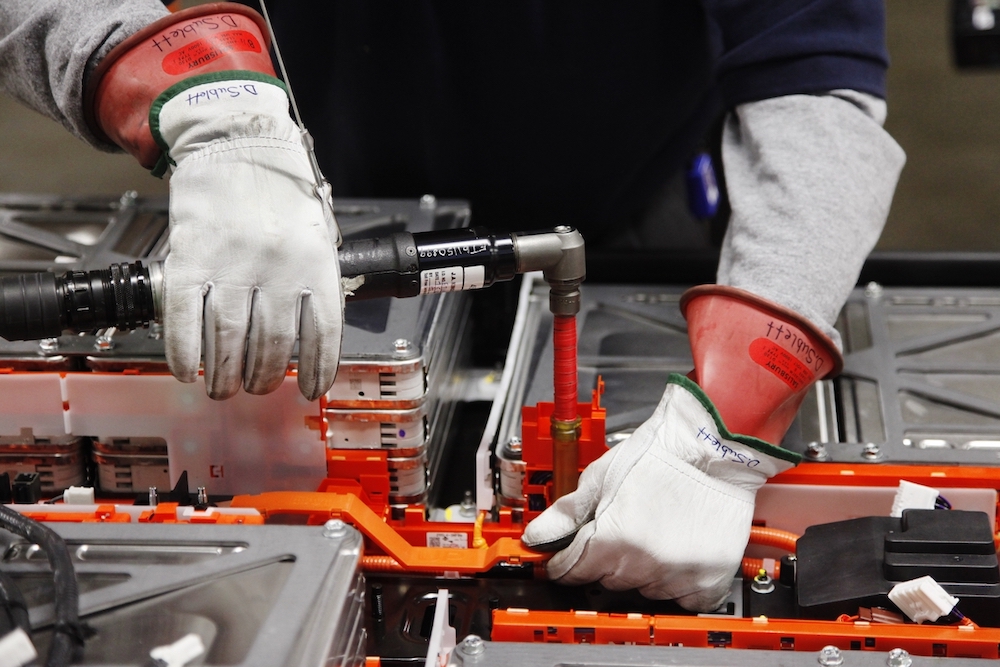
(Image Source: GreenCarReports.com)
5. Charging Infrastructure
The scarcity of charging stations in many areas of the country is increasing the incidence of range anxiety. The federal government is working to help improve the situation through the passage of the Infrastructure Investment and Jobs Act in 2021, which provides $7.5 billion in new funding for EV charging stations and related infrastructure.
The Act will fund an equitable network of 500,000 EV chargers across 75,000 miles of designated corridors across the U.S., benefiting rural communities as much as more highly populated areas. The plan dictates a charging station every 50 miles along the interstate and no more than a mile off the highway. Projects relying at least partly on this funding have already been approved in all 50 states.
There are about 56,000 EV charging stations in the U.S., 52,000 of those available to the public. (Finding them is getting easier, thanks to EV charging location apps like PlugShare.) These stations support about 148,000 EVSEs (individual charging ports), of which about 80% are Level 2, 8% are fast-charging DC units, and the remaining 2% are Level 1 ports.
Despite all the public charging resources, most EV charging still happens at home, presenting a challenge to those who live in shared housing (multi-unit dwellings, or MUDs) and those who have to park on the street.
Studies show that accessible, onsite charging can make a difference in an EV driver’s decision to move into or remain in a particular residential property. The state with the highest EV penetration, California, already mandates that 3% of new MUD parking spaces be “make-ready” for EV charging.
6. Charging Speeds
Charging electric cars can be a problem for drivers who have trouble adjusting to the EV lifestyle, which can dictate a slower pace of life.
There are three primary levels of EV chargers:
- Level 1: Uses a standard 120V plug and can charge most vehicles overnight. Extra-large batteries can take 20 hours or more to charge fully. Most residential chargers are Level 1.
- Level 2: Uses 240V plugs and SAEJ1772 connectors. Most public charging stations are Level 2 or a combination of Level 2 and Level 3.
- Level 3: Uses 480V direct current (DC) fast chargers to provide the quickest possible charge.
Level 2 chargers provide a full charge in as few as 3-4 hours (or as much as 10-12 hours, depending on battery size). A DC fast-charging station can take 30-60 minutes to charge an EV battery to 80 percent, which sounds fast until you consider how much time that can add to longer journeys.
As battery technology improves, these times are expected to reduce substantially. For example, Porsche has already achieved DC charging speeds of 23 minutes for 88% for its Taycan model and claims that a mere 5 minutes can provide up to 62 miles of range. Tesla says that its Model S can achieve 130 miles of range (about 35% of its total) with just 15 minutes of DC charging.
7. Charger Compatibility
Level 2 chargers are mostly coordinated, with all automakers except Tesla using the same type of charging port (Tesla drivers need an adapter). However, there are three different types of DC fast chargers:
- SAE Combined Charging System (CCS): used by most manufacturers
- CHAdeMO: used by Nissan and Mitsubishi
- Tesla Supercharger: used solely by Tesla vehicles
If only because it is different than the universal access to fuel stations enjoyed by gasoline-powered vehicles, these compatibility differences can be an obstacle to widespread EV adoption.
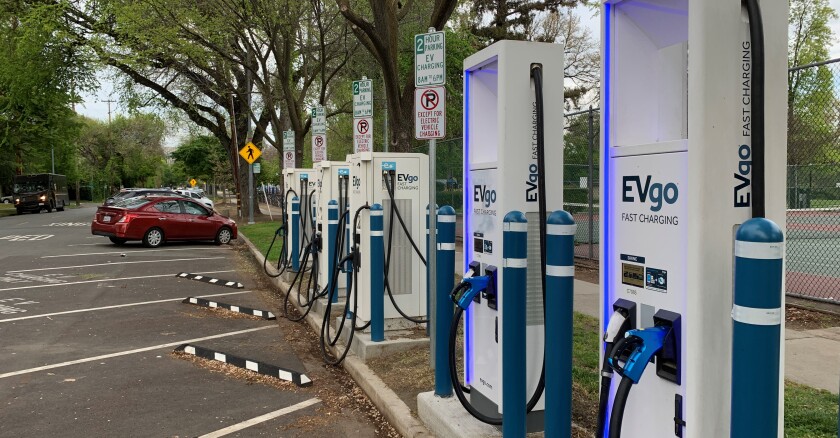 (Image Source: Governing.com)
(Image Source: Governing.com)
8. Grid Capacity
Changing to EVs means millions of people will rely on the electric grid in new ways, and grid capacity will need to increase to avoid strain. Experts vary on how much additional power we’ll need, but the U.S. Department of Energy has predicted a 38 percent increase in electricity consumption by 2050, primarily due to EVs.
The Energy Institute at the University of Texas assessed the electrical demand needed if each state converted all personal cars, trucks, and SUVs to plug-in EVs. They found that statewide energy consumption would increase by a low of 17 percent (Wyoming) to a high of 55 percent (Maine). Most states fell in the 20-30 percent range. Only some states have excess capacity to meet increased demand with existing infrastructure.
9. Charging Station Financing and Ownership
Public EV charging stations can be expensive to install, with components ranging in cost from $2,500 for a Level 2 charger to as high as $36,000 for a DC fast charger. That doesn’t include installation or “soft expenses” such as obtaining permits and connecting with utilities.
Automakers, power companies, and business owners (parking lots, garages, shopping centers, etc.) usually pay for charging station construction to attract EV users. Tesla’s supercharger network and Volkswagen’s Electrify America program are among the nation’s largest commercial networks, with each company spending about $2 billion on its network.
10. Charging Price Structures
EV charging includes several different pricing structures, unlike gasoline which is always priced by the gallon. This difference can result in inconsistent pricing and inflated charging costs, which can create barriers to adoption due to consumer frustration and negative experiences.
Utility regulators set consistent rates per kWh for home charging. Public charging stations may include per-session fees, per-minute fees, or tiered pricing based on charging speed. EV drivers typically favor the per-kWh pricing structure, which seems closest to the per-gallon pricing structure they’re used to. Some states combine per-kWh pricing models with tiers based on charging speeds.
Are you interested in learning more about opportunities for your business in EV Charging? Join us at the upcoming EV Charging Summit & Expo!

